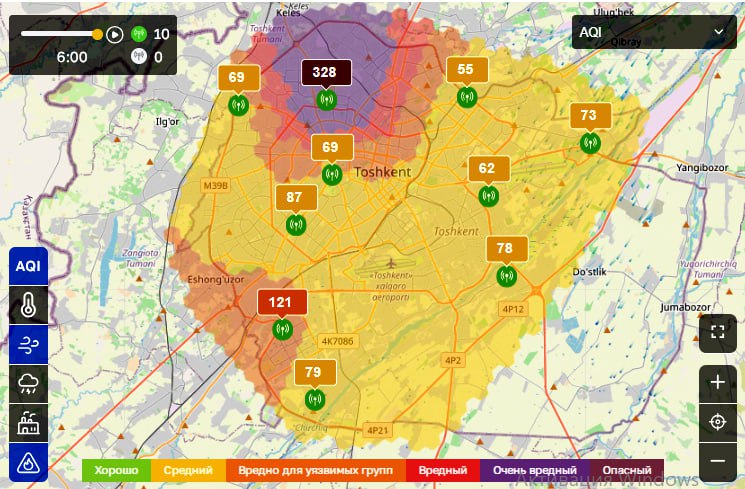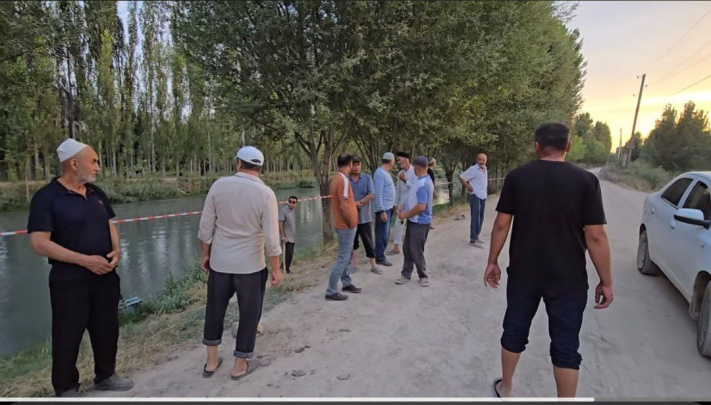Toxic hydrogen peroxide leak in Tashkent’s Olmazor district triggers emergency response and air quality alert
A chemical leak at a warehouse in Tashkent’s Olmazor district caused a serious public health concern overnight on July 21, as hydrogen peroxide was released into the air, prompting an emergency response and triggering extremely hazardous air quality levels.

The incident occurred at an industrial facility on Uzumbog Street, where, according to the Ministry of Emergency Situations (MES), residents began reporting a strong smell of sulfur in the air. Visual footage sent to Kun.uz shows thick smoke covering a large area, with several ambulances heading toward the scene.
In response to the reports, Tashkent city emergency teams were immediately dispatched. Initial assessments revealed that hydrogen peroxide had leaked into the atmosphere from a storage tank at the warehouse. The MES stated that specialized radiation, chemical, and medical-biological protection units contained the situation by 04:00. All relevant emergency services are continuing to work on site, and an investigation into the cause of the leak is underway.
Fortunately, no casualties have been reported so far. However, the consequences of the leak were significant. According to Air Tashkent monitoring data, air quality sensors in Olmazor detected a spike in pollution levels beginning at 01:00. By 02:00, the air pollution index had reached 500 – the maximum level, categorized as “extremely hazardous.”
Climatologist Erkin Abdullakhatov noted that residents in the area were exposed to a pungent odor resembling vinegar and observed a fog-like haze across the neighborhood. Residents reported symptoms associated with chemical exposure.

Hydrogen peroxide is a strong oxidizing agent commonly used in medicine as an antiseptic and in industry for bleaching, cleaning, and catalyzing chemical reactions. When released into the air, it can pose serious health risks, especially at high concentrations. Vapors can irritate the respiratory system and cause coughing, sore throat, nausea, and headaches. Skin or eye contact can result in irritation or even chemical burns.
Prolonged exposure to high concentrations can lead to inflammation of the respiratory tract, reduced lung function, and exacerbate chronic conditions such as asthma or bronchitis. Vulnerable groups – including children, the elderly, and individuals with pre-existing health conditions – are particularly at risk.
The MES confirmed that the chemical release had formed a toxic, gaseous mist due to the interaction of hydrogen peroxide with elements in the atmosphere. While the immediate threat has been neutralized, further updates will be provided once the investigation is complete.
This incident follows a similar emergency in Kokand earlier this year, where liquid ammonia leaked into the air, prompting urgent response measures.
Related News

12:34 / 11.07.2025
Flood threat returns to Buloqboshi: Residents alarmed by rising water levels in Southern Fergana Canal

13:45 / 10.07.2025
Medical hotline sees 8% surge in emergency calls

17:10 / 04.07.2025
Emergency Ministry warns of fake officers extorting money from residents ‘for fire safety’

14:57 / 27.06.2025



